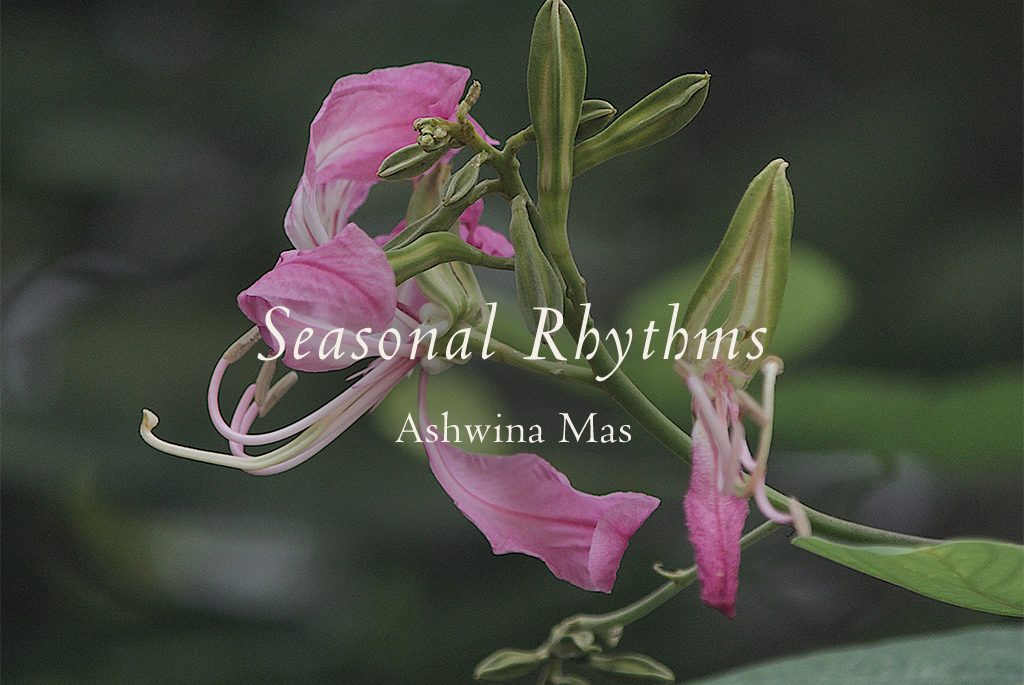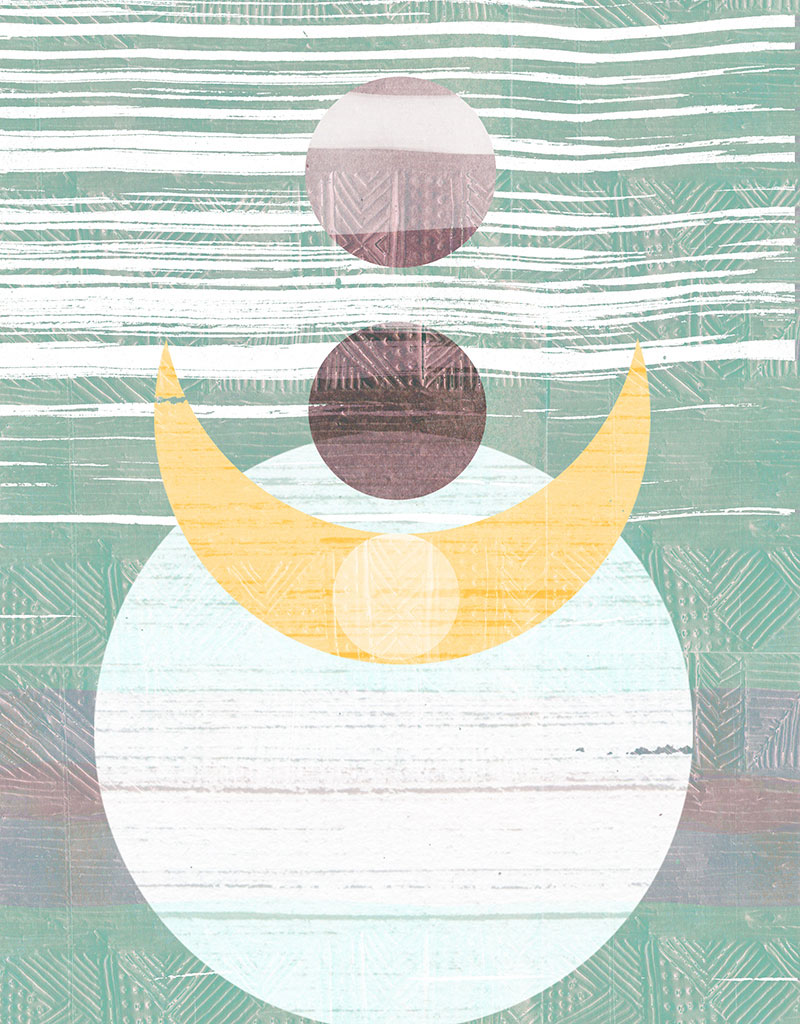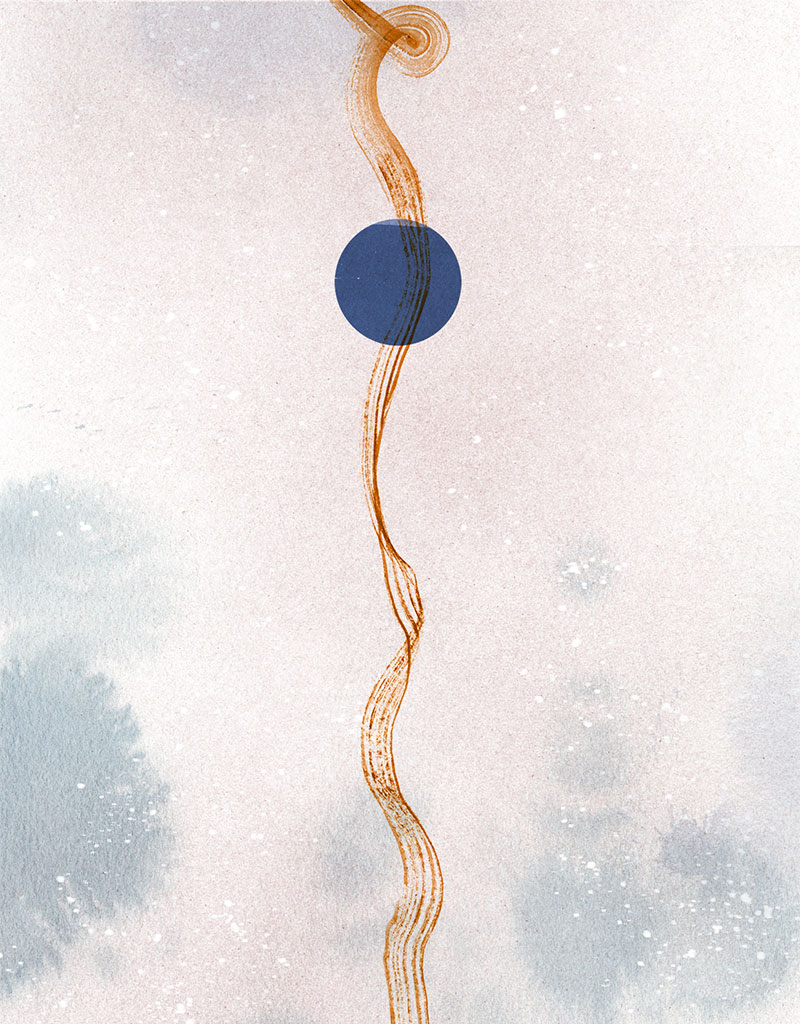Nilakshi Sharma

The month of Ashwina signals the arrival of Sharad rtu, a season that has long been extolled as the season of grace and beauty. The tumult and dramatic beauty of Varsha rtu now gives way to a time of perfect balance and clarity. Autumn in the Indian subcontinent’s classical literature has often been described as a time of perfection and of a harmonious balance – especially between the energies of the Sun and the Moon. The skies and the waters are clear. Lotuses once bloom and the water birds frolic on the banks of rivers and ponds and in marshes.
The Sun warms gently from its perch in cerulean blue skies; the earth offers its harvest – trees are laden with fruits and the fields are full, waiting to be harvested. And above it all is the fabled magic and beauty of Sharad rtu’s Moon, whose silvery shimmer seems tinged with a glimmer of gold.
Sharad rtu is also the season of the goddess, when the feminine energy and the fluidity of water hold dominion over our hearts and minds.
Hamsodaka: Ritual of Balance
The dramatic beauty and mercurial changes of monsoon are also a time of imbalance – water saturates everything and dominates. But with the arrival of Ashwina, balance begins to be restored between the energy of the Sun and the Moon, between earth and water. Hamsodaka is a ritual practice recommended in the Charaka Samhita, an ancient Ayurvedic text. Use a covered vessel or bottle (ideally terracotta, glass or a pure metal like copper or silver) to keep water out in the open for a full 24 hours. And then drink it as normal. This water, which has first been heated by the rays of the Sun and then cooled overnight under the energy of the Moon, is called Hamsodaka and is thought to be beneficial for the body and the senses.
Garlands: Ritual of Fragrance
Wearing garlands or gajras (string of flowers worn in the hair) of Jasmines, Champaka and desi Gulab during this season is a fragrant ritual of both beauty and balance. Apart from the visual and olfactory delight, this practice helps calm the nervous system and gently grounds our minds as a result of natural aromatherapy.
Jiva Nirlekhana: Ritual of Self Care
As per the Ayurvedic worldview, the start of Ashwina month (and with it the onset of Sharad rtu) facilitates a natural tendency towards the balance between the three doshas (Vata, Pitta & Kapha) in the body. During the season of rains our doshas tend to become aggravated and our metabolism also slows down, meaning a weakening of the digestive fire. Daily tongue cleansing is a gentle daily practice that can further help the body to find balance between the three doshas. Jiva Nirlekhana or tongue cleaning, is ideally an integral daily hygiene practice according to Ayurveda. But is considered to be particularly beneficial during the two months of Sharad rtu. Use a pure Copper or Silver tongue scraper to gently clean your tongue every morning. This is thought to help rid the tongue of the coating of toxins or Ama and to also improve digestion.
Honouring the Divine Feminine
According to one legend, the season is thought to derive its name from the goddess Sharada; she who presides over the power of speech or Vac and learning and fine arts. Regardless of whether this is true or not, this is most certainly the season of honouring the divine feminine energy. Of these amongst the most widely celebrated are the Dakshinayana Navratri or the nine nights of the Goddess that come in the month of Ashwina. In these we celebrate the goddess Durga, the slayer of evil. But these nine nights and days are also a forgotten celebration of Shakambari Devi – the goddess who regenerated vegetation upon a drought and famine struck earth.
Legend has it that there was a terrible drought across the Earth. As the vegetation shrivelled up and died out, gods and mortals alike prayed to the goddess for relief. In response to the prayers the Great Goddess came to earth as Shakambari Devi. And for nine days and nine nights her body became the fertile source of vegetation and green growth, with which she seeded the Earth anew, making it bountiful. Maybe this is why one of the older Vedic names for this month was Isha, which means fertility.
Lover’s Moon: Sharad Purnima
Ashwina mas comes to close with the most mythologised Full Moon of the year – Sharad Purnima. The moon is considered to be radiant with a display of all its sixteen kalas or aspects and the moonlight is considered to be healing. This Full Moon is also celebrated as the Lover’s Moon; the night of magic when Radha and Krishna engage in Ras Leela under the moonlight in groves redolent with the scent of Parijat.
But it is also seen as the Full Moon of spiritual illumination, with this night being celebrated in many parts of India as ‘Kojagiri Purnima’. Literally it asks, ‘who is awake?’ And those who are awake are said to blessed by Lakshmi, who is also the goddess who bestows the wisdom to see beyond material abundance.
This year Sharad Purnima comes on October 28.





